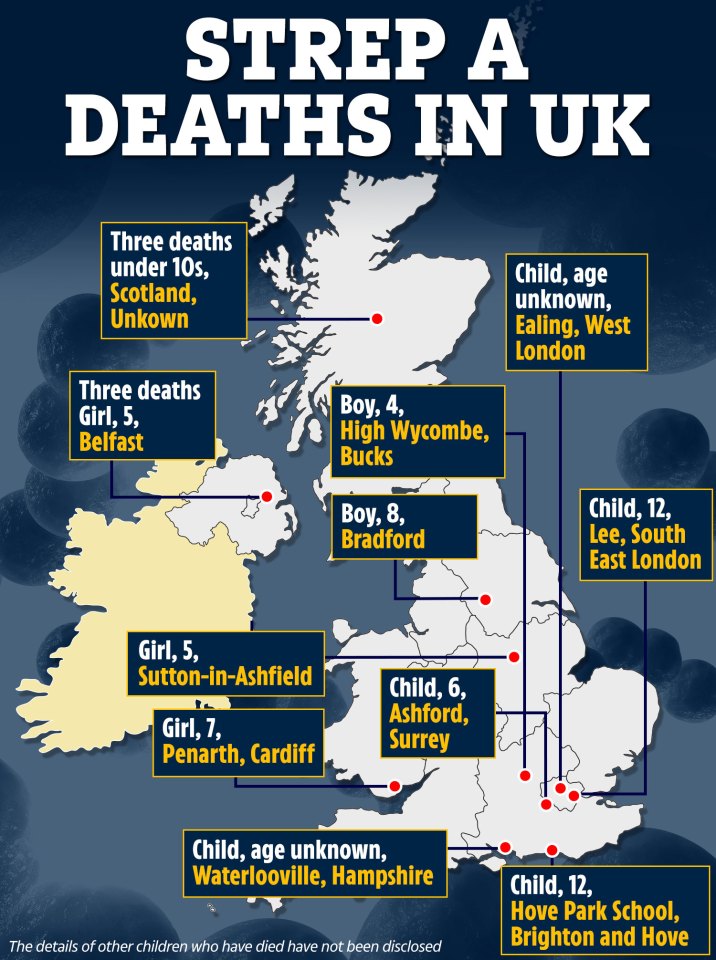Schoolgirl, five, died from Strep A in hospital surrounded by devastated family as probe launched into tragic death

A FIVE-year-old girl died from Strep A in hospital surrounded by her devastated family, an inquest heard.
Meha Carneiro, of Sutton-in-Ashfield, Notts, tragically passed away at King's Mill Hospital on December 5.
A provisional post mortem, read out by assistant coroner Hannah Mettam at Nottingham Council House, found she died of Group A Streptococcus sepsis.
Opening an inquest into Meha's death on Thursday, February 16, Ms Mettam said she was with her parents at the time of her passing.
"I'd like to take this opportunity to express my sincere condolences, particularly to her parents, at this difficult time," she said.
The investigation into her death was adjourned to a date yet to be fixed.
Read More in Health
It comes after 32 children in England have died of invasive Group Strep A this winter - a serious illness where the bacteria gets into the blood stream.
There have been 262 deaths in all age groups across England and over 44,000 notifications of scarlet fever.
Last December, the UK Health Security Agency (UKHSA) said the number of Strep A infections identified was unusually high for the time of year.
And there have also been 2,081 Invasive Group A Strep (iGAS) infections across all age groups as of the latest data.
Most read in Health
There have been 156 iGAS cases in children aged 5 to 9, while there have been 233 cases in children aged 1 to 4.
In rare cases, it can trigger serious illnesses including pneumonia, meningitis and sepsis.
Group A streptococcus (GAS) are a type of bacteria found in the throat and skin.
Invasive Group Strep A occurs if these bacteria get into the bloodstream or other areas where they shouldn't be.
This can then lead to serious illnesses such as pneumonia, meningitis and sepsis.
Bacterial pneumonia happens when there is a swelling of the tissue in one or both lungs caused by infection.
When a person has pneumonia, the clusters of tiny air sacs at the end of your breathing tubes located in the lungs become filled with fluid.
Dr Derren Ready, Incident Director, UKHSA, said: "Although the number of scarlet fever notifications we are seeing each week has significantly fallen since the peak in December, the bacteria that cause the infection are still circulating at high levels for this time of the year.
"Please contact NHS 111 or your GP if you suspect you or your child have scarlet fever – with symptoms such as fever, sore throat, difficulty swallowing, and a sandpapery rash.
Read More on The Sun
"Early treatment of scarlet fever with antibiotics is important to reduce the risk of a more serious infection and transmission to others. After starting antibiotics, children should be excused from school or nursery, and adults should be excused from work for the first 24 hours.
"It is important that we continue to help reduce the spread of all infections in the community and to vulnerable groups. Wash your hands regularly and thoroughly, catch coughs and sneezes in a tissue, and where possible keep your home well-ventilated."
What are the symptoms of invasive group Strep A disease?
There are four key signs of Group Strep A to watch out for, according to the NHS. These are:
- A fever (meaning a high temperature above 38°C)
- Severe muscle aches
- Localised muscle tenderness
- Redness at the site of a wound
The invasive version of the disease happens when the bacteria break through the body's immune defences.
This can happen if you're already feeling unwell or have an immune system that’s weakened.

















